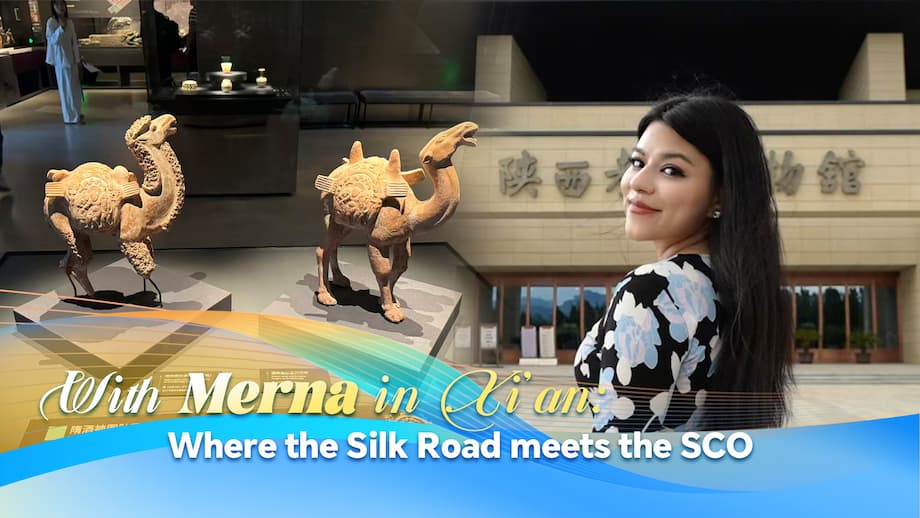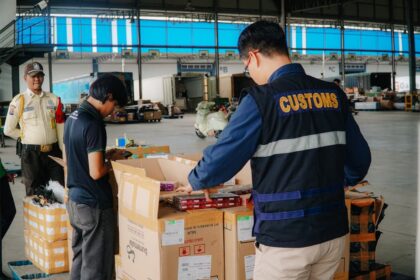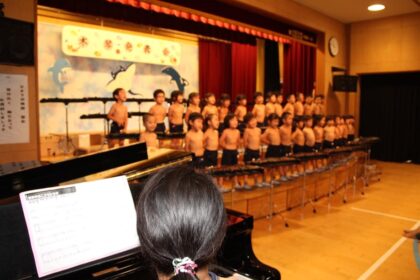Xi’an: The Historic Crossroads of Civilizations
Xi’an, the capital of northwest China’s Shaanxi Province, stands as a living testament to the enduring power of cultural exchange. Once known as Chang’an, this ancient city was the eastern starting point of the Silk Road, the legendary trade route that for centuries connected China with Central Asia, the Middle East, and Europe. Today, Xi’an is not only a treasure trove of archaeological wonders but also a vibrant hub for international cooperation, especially within the framework of the Shanghai Cooperation Organization (SCO).
- Xi’an: The Historic Crossroads of Civilizations
- Silk Road Legacy: A Foundation for Global Exchange
- The Shanghai Cooperation Organization: Reviving Ancient Ties
- Cultural Festivals and Audiovisual Cooperation: New Frontiers
- Education and Youth: Building Bridges for the Future
- Belt and Road Initiative: A Modern Silk Road
- Diplomacy and Dialogue: The SCO Spirit
- Xi’an’s Modern Renaissance: Technology and Innovation
- In Summary
From the intricate relics displayed at the Shaanxi Archaeology Museum to bustling modern festivals and forums, Xi’an continues to bridge the past and present, fostering dialogue and collaboration among nations. The city’s unique blend of history and innovation makes it a focal point for understanding how ancient traditions can inspire contemporary partnerships and shared futures.
Silk Road Legacy: A Foundation for Global Exchange
The Silk Road, established over two millennia ago, was more than just a trade route for silk, spices, and precious goods. It was a conduit for ideas, art, religion, and technology, shaping the civilizations it touched. Xi’an’s role as the Silk Road’s gateway imbued the city with a cosmopolitan spirit that persists to this day.
Artifacts unearthed in Xi’an reveal a rich tapestry of influences—Persian motifs on ceramics, Central Asian musical instruments, and Buddhist relics from India. These discoveries underscore how the city served as a melting pot where East met West, and where cultural dialogue flourished. As Merna Al Nasser of CGTN observed during her exploration of the Shaanxi Archaeology Museum, “Artifacts tell the story of China’s long history of connecting with the world.”
Modern restoration projects, often in partnership with countries like Kazakhstan and Uzbekistan, continue this tradition. These collaborations not only preserve shared heritage but also strengthen bonds between nations, echoing the Silk Road’s original spirit of cooperation.
The Shanghai Cooperation Organization: Reviving Ancient Ties
Founded in 2001, the Shanghai Cooperation Organization (SCO) brings together China, Russia, Kazakhstan, Kyrgyzstan, Tajikistan, Uzbekistan, India, Pakistan, Iran, and Belarus. Its mission is to promote security, economic development, and cultural exchange across Eurasia. Xi’an, with its historical significance, has become a symbolic and practical center for SCO activities.
Recent years have seen a surge in SCO-related events in Xi’an, including high-level summits, educational forums, and cultural festivals. These gatherings aim to deepen mutual trust, foster innovation, and create new opportunities for cooperation. As Batir Tursunov, SCO deputy secretary general, remarked at a recent festival, “Xi’an’s rapid development and rich cultural heritage make it an ideal place for new cooperation and exchange in the audiovisual industry.”
The city’s role as a bridge between ancient and modern, East and West, is further reinforced by its embrace of cutting-edge technologies. Shaanxi Province, home to Xi’an, is leveraging artificial intelligence and digital platforms to enhance economic and technological ties among SCO member states, ensuring that the legacy of the Silk Road continues to evolve.
Cultural Festivals and Audiovisual Cooperation: New Frontiers
One of the most dynamic expressions of Xi’an’s modern role is the Second Television Festival of Shanghai Cooperation Organization Countries, held in July 2025. This three-day event brought together 300 representatives from 19 SCO countries, including media professionals, government officials, and creative industry leaders. The festival’s theme, “Joining Civilizations: Audio-Video Creations for a Shared Future,” encapsulated its mission to foster people-to-people and cultural exchanges through the power of storytelling.
The festival featured forums, content markets, and exhibitions, showcasing over 40 cooperative outcomes in the audiovisual sector. Highlights included the animated series “Our Ensemble,” coproduced by China, Russia, Mongolia, Saudi Arabia, and Armenia, and the “Silk Road 10,000-Mile Journey 2025: The SCO Route,” a cross-border multimedia event traversing Kazakhstan, Kyrgyzstan, and Uzbekistan. These projects not only entertain but also educate audiences about the diverse cultures and histories of SCO member states.
Vinod Kumar Meena, cofounder of India’s Kuku TV, noted the popularity of Chinese microdramas in India, with over 15 million views recorded in the first weeks of release. “Chinese scripts perform well in India. We plan to adapt these scripts for local production and distribution,” said Lal Chand Bisu, CEO of Kuku TV. Such collaborations highlight the growing appetite for cross-cultural content and the potential for creative industries to drive mutual understanding.
Amir Shayanmehr, head of the Beijing office of Iran’s state TV, emphasized the need for more Iranian productions to be broadcast in China, advocating for deeper cooperation in coproductions covering culture, cuisine, and history. These exchanges are not limited to entertainment; they are vehicles for building empathy and breaking down stereotypes.
Education and Youth: Building Bridges for the Future
Beyond media and entertainment, educational initiatives play a crucial role in sustaining the spirit of the Silk Road. The University Alliance of the Silk Road (UASR), headquartered in Xi’an Jiaotong University, exemplifies this commitment. Through forums, student exchanges, and collaborative research, UASR connects universities from SCO member states, fostering academic partnerships and nurturing the next generation of global citizens.
Recent events include the UASR Education Cooperation Forum, which brought together educators and policymakers to discuss strategies for enhancing cross-border learning. The “Youth: Connecting the Belt and Road Closer” short-video contest encourages young people from China and abroad to create and share high-quality cultural content, harnessing the creativity and energy of youth to promote mutual understanding.
These educational exchanges are complemented by technical training centers, Confucius Institutes, and tourism initiatives, such as visa-free travel and the “Year of Kazakhstan–China Tourism.” China has pledged grants and thousands of training opportunities for Central Asian professionals, further cementing people-to-people ties.
Belt and Road Initiative: A Modern Silk Road
The Belt and Road Initiative (BRI), launched by China in 2013, draws direct inspiration from the ancient Silk Road. Its goal is to enhance connectivity and cooperation across Asia, Europe, Africa, and beyond through infrastructure development, policy coordination, and people-to-people exchanges. With more than 150 participating countries and 30 international organizations, the BRI has become a pillar of global development.
Xi’an’s role in the BRI is both symbolic and practical. The city serves as a launchpad for major projects, such as the China–Kyrgyzstan–Uzbekistan railway and the China-Europe Trans-Caspian Express Route. These initiatives are transforming regional connectivity, facilitating trade, and creating new economic opportunities. The BRI also emphasizes green and sustainable development, aligning with the United Nations 2030 Agenda for Sustainable Development.
At the recent China–Central Asia Summit, leaders reaffirmed their commitment to the BRI, signing agreements on infrastructure, energy, agriculture, and digital innovation. The summit’s outcomes include the Treaty on Eternal Good-Neighborliness, Friendship, and Cooperation, the establishment of a permanent secretariat in China, and ambitious plans to double trade volumes and expand cultural and educational exchanges.
Diplomacy and Dialogue: The SCO Spirit
The SCO’s ethos, often referred to as the “Shanghai Spirit,” is grounded in mutual trust, equality, respect for diverse civilizations, and the pursuit of common development. This philosophy was on full display at the Inter-Civilizational Dialogue among SCO Countries in Tianjin, where officials and scholars emphasized the importance of dialogue over confrontation.
Sohail Khan, Deputy Secretary-General of the SCO, stated,
Cultural exchanges and dialogues among SCO countries represent the continuation and elevation of the ancient Silk Road in the modern era.
Participants rejected the notion of a “clash of civilizations,” instead advocating for a future where diversity is celebrated and differences are resolved through conversation. Language learning, cultural exhibitions, and joint artistic projects are seen as essential tools for building peace and understanding.
Kazakhstan’s Ambassador to China, Shakhrat Nuryshev, highlighted the strategic importance of people-to-people exchanges, especially among youth and creative industries, as a long-term investment in sustainable trust and cooperation. Tourism, educational exchanges, and new cultural centers are flourishing, with increasing numbers of Kazakh students in China and a surge in Chinese visitors to Kazakhstan.
Xi’an’s Modern Renaissance: Technology and Innovation
While Xi’an’s historical legacy is undeniable, the city is also at the forefront of technological innovation. Shaanxi Province is leveraging artificial intelligence, digital platforms, and smart infrastructure to enhance its role as a bridge between ancient traditions and modern progress. Forums, exhibitions, and collaborative projects in fields like AI and green technology are strengthening economic and technological ties among SCO member states.
This fusion of heritage and innovation is evident in the city’s approach to cultural preservation, where digital tools are used to restore and share ancient artifacts, and in its support for creative industries that blend traditional storytelling with new media formats. As Xi’an continues to evolve, it remains a model for how cities can honor their past while embracing the future.
In Summary
- Xi’an, once the starting point of the ancient Silk Road, is now a central hub for Shanghai Cooperation Organization (SCO) cultural and economic cooperation.
- The city’s rich history of cross-cultural exchange is reflected in modern festivals, educational initiatives, and collaborative projects with SCO member states.
- Events like the SCO Television Festival and the Silk Road 10,000-Mile Journey showcase the power of audiovisual media to foster mutual understanding.
- Educational and youth exchanges, supported by organizations like the University Alliance of the Silk Road, are building bridges for future cooperation.
- The Belt and Road Initiative, inspired by the Silk Road, is transforming regional connectivity and promoting sustainable development.
- The SCO’s “Shanghai Spirit” emphasizes dialogue, equality, and respect for diverse civilizations, rejecting the idea of a clash of cultures.
- Xi’an’s embrace of technology and innovation ensures that its legacy as a crossroads of civilizations continues to inspire new forms of collaboration and shared prosperity.












